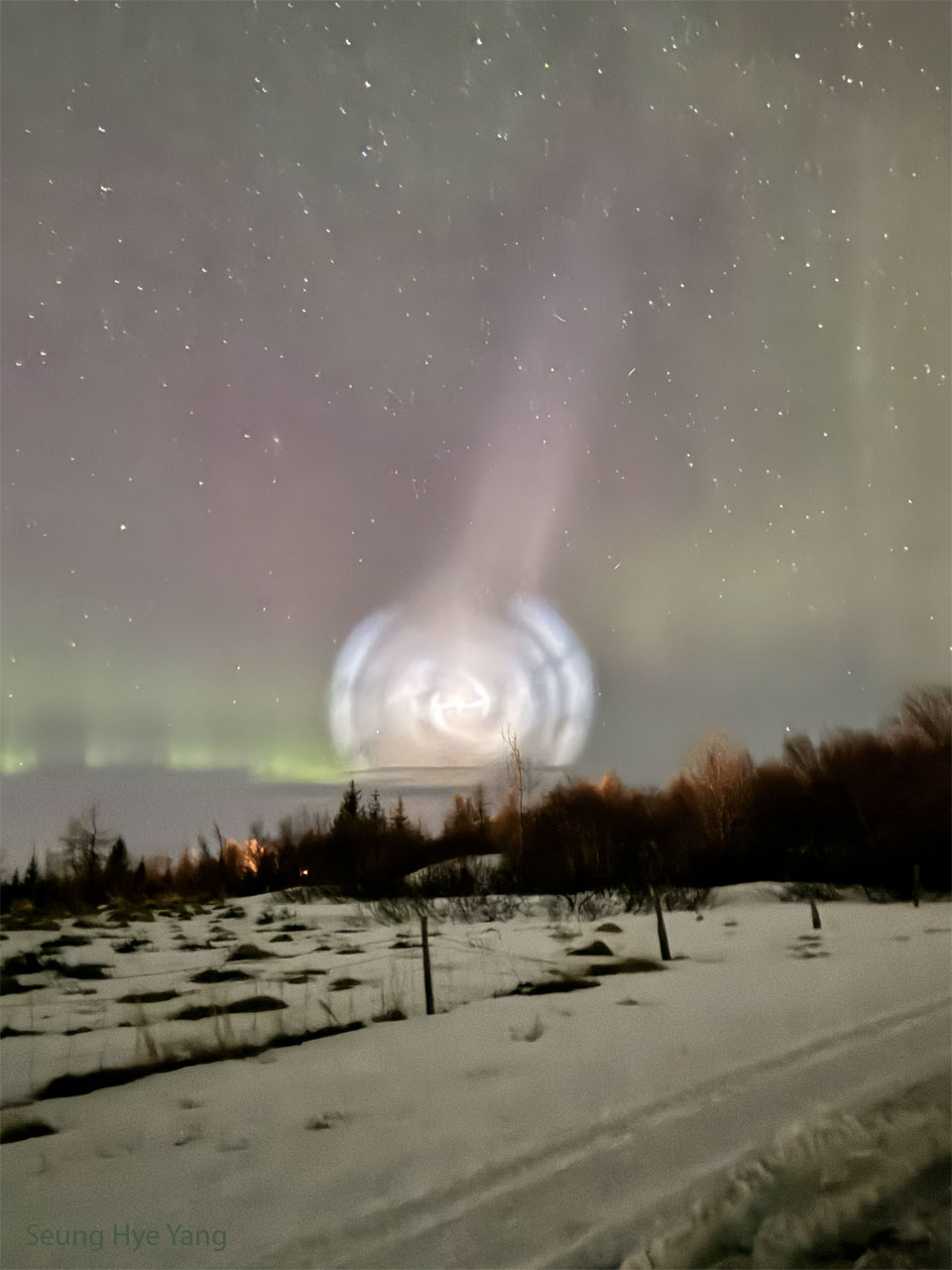
What's that over the horizon? What may look like a strangely nearby galaxy is actually a normal rocket's exhaust plume -- but unusually backlit. Although the SpaceX Falcon 9 rocket was launched from Cape Canaveral in Florida, USA, its burned propellant was visible over a much wider area, with the featured photograph being taken from Akureyri, Iceland. The huge spaceship was lifted off a week ago, and the resulting spectacle was captured soon afterward with a single 10-second smartphone exposure, before it quickly dissipated. Like noctilucent clouds, the plume's brightness is caused by the Twilight Effect, where an object is high enough to be illuminated by the twilight Sun, even when the observer on the ground experiences the darkness of night. The spiral shape is likely caused by high winds pushing the expelled gas into the shape of a corkscrew, which, when seen along the trajectory, looks like a spiral. Stars and faint green and red aurora appear in the background of this extraordinary image.
from NASA https://ift.tt/sTx1W7L
Comments
Post a Comment